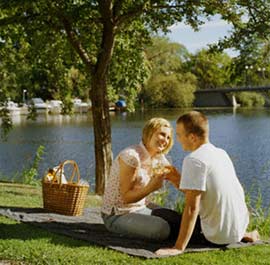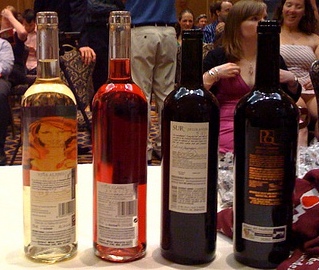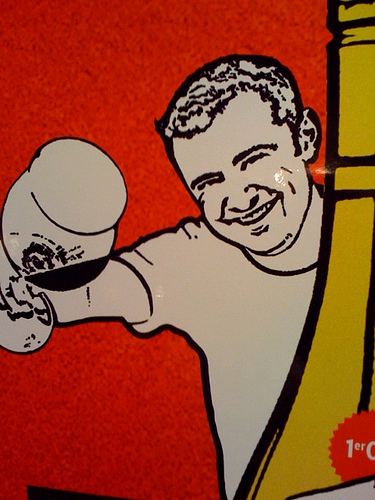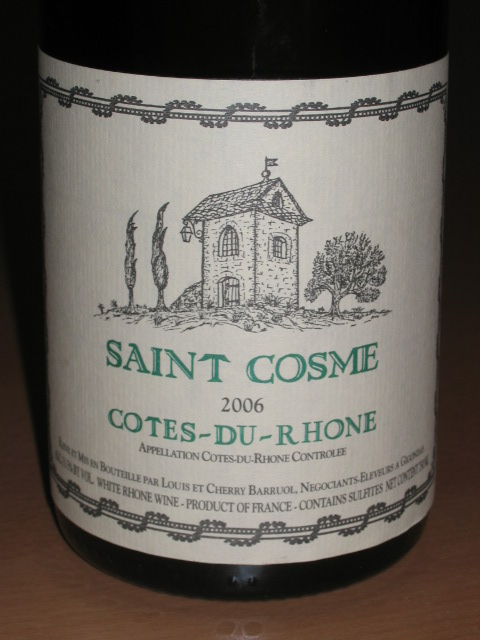Romance is half the fun in the world of wine. Every movie is chalk full of great imagery, enticing viewers to hit the riviera and sip a cool glass of rose, picnic on a hilltop overlooking the vineyard below, or dance around barefoot in a great big vat of grapes. Music and terroir are always part of the equation, too.
If you thought you couldn't live a romantic food/wine life in the Boston suburbs of Medford/Somerville, here's your chance to test the theory! This Saturday from noon to seven the Mystic River Music Festival will bring together all the necessary ingredients for a fabulous afternoon - and all the proceeds from your snacking and imbibing will go towards a great cause, the Mystic River Watershed Foundation.
hit the riviera and sip a cool glass of rose, picnic on a hilltop overlooking the vineyard below, or dance around barefoot in a great big vat of grapes. Music and terroir are always part of the equation, too.
If you thought you couldn't live a romantic food/wine life in the Boston suburbs of Medford/Somerville, here's your chance to test the theory! This Saturday from noon to seven the Mystic River Music Festival will bring together all the necessary ingredients for a fabulous afternoon - and all the proceeds from your snacking and imbibing will go towards a great cause, the Mystic River Watershed Foundation.
I spoke with Brian Lamb, full-time owner of Our Glass Wine Co. on Route 1 and part-time mastermind behind this great event. It seems that the Condon Shell (a Medford mini Hatch Shell venue, if you will) was the inspiration behind the event. A long-time lover of the site, Lamb approached Mayor McGlynn with the idea to use the Condon Shell for an afternoon of entertainment. McGlynn was more than happy to get on board. The Shell had been recently re-acquired by the city of Medford and McGlynn had hoped to bring music and the arts back to Medford. This was a perfect opportunity.
The event will feature music from local bands, grilled fare provided by Whole Foods, crafts by local artists, and other local vendors committed to all things Green. Perhaps most noteably (from my perspective), the wines on offer will all be organic selections.... and there are some TRULY phenomenal ones in the mix.
Here's a quick preview of just three of the many wines available on Saturday:
2007 Jelu Torrontes ~ Everyone knows Argentine Malbec. Well... Torrontes will have the same U.S. following as the leading white wine varietal coming from that part of the world soon enough! Not bitter at all (as some Torrontes can be) this wine is the PERFECT summer sipper. It offers gorgeous ripe fruits, healthy acidity and a nice medium body allowing it greater food pairing versatility. A welcome treat. The Cafe Europa team is responsible for bringing this little number to the event's wine roster.
2007 Mas de Gourgonnier Rose ~ If you've tasted the standard red Mas de Gourgonnier (in the crazy, 'fat' bottle with the long neck) you know you're in for a treat with this rose. This vineyard has been making organic wines before organic was "in". And this rose is one of the best out there. It offers fabulous summer strawberry and raspberry aromas and flavors, but is refreshingly crisp and dry (as all great rose should be). A blend of Grenache, Syrah, Mouvedre, Cinsault and Cab, it can hold up to serious BBQ magic, too. Ideal Wine Imports are responsible for bringing this to a store near you and will be donating this selection to the event.
2005 Vinos Pinol Sacra Natura ~ This is a red wine blend from the Terra Alta region of Spain (near Priorat, south of Barcelona) where the soil lacks optimal nutrients; this causes the vines to 'work harder' and results in fewer bunches but more concentrated fruit. The Sacra Natura in particular hails from a vineyard boasting 95 year old vines (read: even more concentrated fruit). A robust blend of Cariñena, Merlot, Cab Sauvignon, Syrah and Tempranillo, this wine does not hold back. Ole Imports & Ruby Wines will be donating this bad boy.
Rain or shine, the Condon Shell should be your local event stop this weekend!
So, what are you waiting for? Do you plan to be 'romanced' in Medford?


 I alluded earlier this week that my take on the 4 wines Gary Vaynerchuk tasted out at the
I alluded earlier this week that my take on the 4 wines Gary Vaynerchuk tasted out at the 
 After the show ended Gary asked the crowd the following question: Do you like 1) mangos, 2) escargo and 3) sliders from White Castle? If you answered "yes" to ALL THREE of those, then you have the same palate as Gary. I answered yes to only one, mangoes. But Gary and I certainly share a similar philosophy about wine: get out there and taste!
After the show ended Gary asked the crowd the following question: Do you like 1) mangos, 2) escargo and 3) sliders from White Castle? If you answered "yes" to ALL THREE of those, then you have the same palate as Gary. I answered yes to only one, mangoes. But Gary and I certainly share a similar philosophy about wine: get out there and taste! A couple of weeks ago I was on deck pouring a "sippy sip" of four different wines. Since it was bloody H O T that week in Boston, it was only fair to choose wines that were thirst-quenching or perfect for grilled fare. A South African Chenin Blanc, an Italian frizzante-styled white, a Spanish rose, and an all-American Zin were on offer. The tasters enjoyed the Chenin more than any other selection but the Rose stirred up the most conversation....
When I posted
A couple of weeks ago I was on deck pouring a "sippy sip" of four different wines. Since it was bloody H O T that week in Boston, it was only fair to choose wines that were thirst-quenching or perfect for grilled fare. A South African Chenin Blanc, an Italian frizzante-styled white, a Spanish rose, and an all-American Zin were on offer. The tasters enjoyed the Chenin more than any other selection but the Rose stirred up the most conversation....
When I posted  north to the Penedes region where Cava (Spanish bubbly) is king. The
north to the Penedes region where Cava (Spanish bubbly) is king. The  The table's biggest wine nerd, I was asked to select a bottle of wine for all to enjoy. Each of us selected a completely different entree, however, so it was no easy task - and I sense one that many of us grapple with when out with a group. Fortunately, when it comes to
The table's biggest wine nerd, I was asked to select a bottle of wine for all to enjoy. Each of us selected a completely different entree, however, so it was no easy task - and I sense one that many of us grapple with when out with a group. Fortunately, when it comes to  Is it just me or are the Beijing Olympics stirring up all kinds of news headlines these days? One I caught this week was in regard to the unsurprisingly controversial
Is it just me or are the Beijing Olympics stirring up all kinds of news headlines these days? One I caught this week was in regard to the unsurprisingly controversial 
 I don't know about you, but with the Euro/Dollar scenario, an increase in gas prices and my grocery bill skyrocketing (despite similar buying habits), I'm looking at my life budget a bit differently these days. A few weeks ago I noticed it's actually getting to be cheaper to eat out than stay in! And I can't tell you how many
I don't know about you, but with the Euro/Dollar scenario, an increase in gas prices and my grocery bill skyrocketing (despite similar buying habits), I'm looking at my life budget a bit differently these days. A few weeks ago I noticed it's actually getting to be cheaper to eat out than stay in! And I can't tell you how many 
 killer barnyard nose. "Manuer," they asked skeptically? "That's it," I replied happily! The French are just so darn good at getting the
killer barnyard nose. "Manuer," they asked skeptically? "That's it," I replied happily! The French are just so darn good at getting the